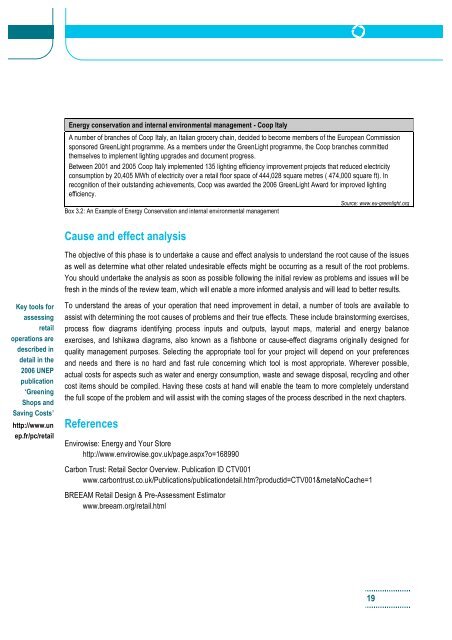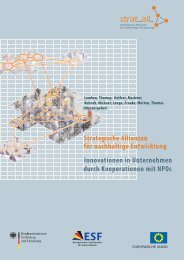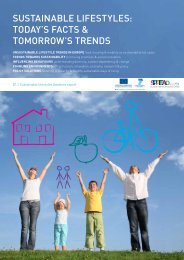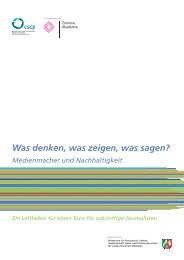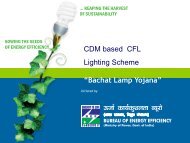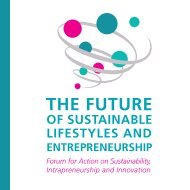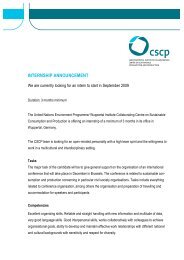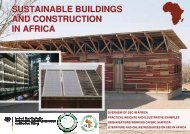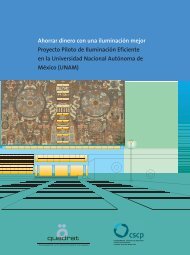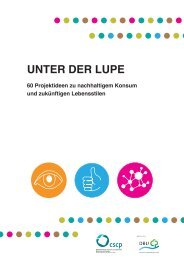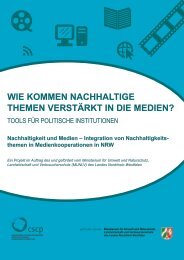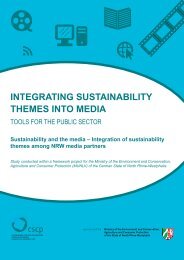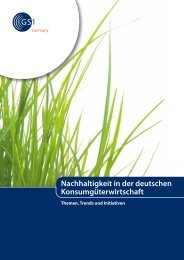Retailers Calendar
Retailers Calendar
Retailers Calendar
You also want an ePaper? Increase the reach of your titles
YUMPU automatically turns print PDFs into web optimized ePapers that Google loves.
Energy conservation and internal environmental management - Coop Italy<br />
A number of branches of Coop Italy, an Italian grocery chain, decided to become members of the European Commission<br />
sponsored GreenLight programme. As a members under the GreenLight programme, the Coop branches committed<br />
themselves to implement lighting upgrades and document progress.<br />
Between 2001 and 2005 Coop Italy implemented 135 lighting efficiency improvement projects that reduced electricity<br />
consumption by 20,405 MWh of electricity over a retail floor space of 444,028 square metres ( 474,000 square ft). In<br />
recognition of their outstanding achievements, Coop was awarded the 2006 GreenLight Award for improved lighting<br />
efficiency.<br />
Source: www.eu-greenlight.org<br />
Box 3.2: An Example of Energy Conservation and internal environmental management<br />
Cause and effect analysis<br />
The objective of this phase is to undertake a cause and effect analysis to understand the root cause of the issues<br />
as well as determine what other related undesirable effects might be occurring as a result of the root problems.<br />
You should undertake the analysis as soon as possible following the initial review as problems and issues will be<br />
fresh in the minds of the review team, which will enable a more informed analysis and will lead to better results.<br />
Key tools for<br />
assessing<br />
retail<br />
operations are<br />
described in<br />
detail in the<br />
2006 UNEP<br />
publication<br />
‘Greening<br />
Shops and<br />
Saving Costs’<br />
http://www.un<br />
ep.fr/pc/retail<br />
To understand the areas of your operation that need improvement in detail, a number of tools are available to<br />
assist with determining the root causes of problems and their true effects. These include brainstorming exercises,<br />
process flow diagrams identifying process inputs and outputs, layout maps, material and energy balance<br />
exercises, and Ishikawa diagrams, also known as a fishbone or cause-effect diagrams originally designed for<br />
quality management purposes. Selecting the appropriate tool for your project will depend on your preferences<br />
and needs and there is no hard and fast rule concerning which tool is most appropriate. Wherever possible,<br />
actual costs for aspects such as water and energy consumption, waste and sewage disposal, recycling and other<br />
cost items should be compiled. Having these costs at hand will enable the team to more completely understand<br />
the full scope of the problem and will assist with the coming stages of the process described in the next chapters.<br />
References<br />
Envirowise: Energy and Your Store<br />
http://www.envirowise.gov.uk/page.aspx?o=168990<br />
Carbon Trust: Retail Sector Overview. Publication ID CTV001<br />
www.carbontrust.co.uk/Publications/publicationdetail.htm?productid=CTV001&metaNoCache=1<br />
BREEAM Retail Design & Pre-Assessment Estimator<br />
www.breeam.org/retail.html<br />
19


